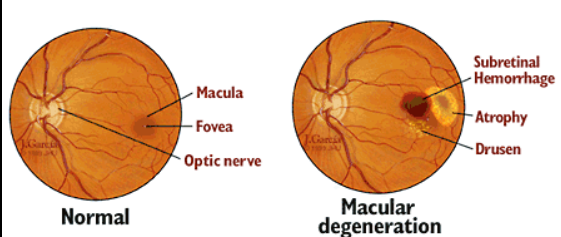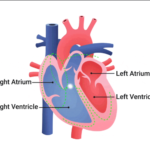Learn about the symptoms, causes, and treatment options for this age-related eye disease, macular degeneration
Age-related macular degeneration is the leading cause of vision loss in those who are 50 or older. In fact, 11 million people in the U.S. have some type of age-related macular degeneration, according to the BrightFocus Foundation. That number is expected to double by 2050 as the population ages. By 2020, an estimated 196 million people will be living with age-related macular degeneration, according to the BrightFocus Foundation, a nonprofit that supports research and education about eye and brain diseases.
Also read-Eye Disease : A Patient’s Guide To Eye Disease
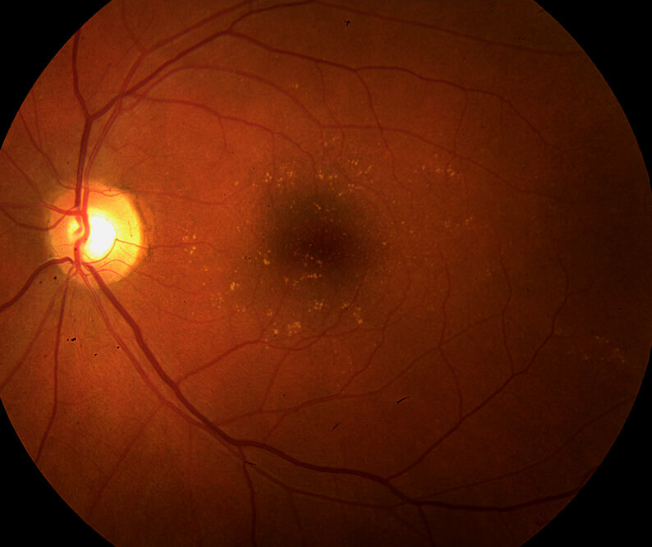
What is macular degeneration?
Our eyes have a retina, a thin tissue layer in the back of the eye that helps us sense light and send images of what we are seeing to our brain. One part of the retina is called the macula, and the macula gives us the crisp vision we need for common tasks like reading or driving.
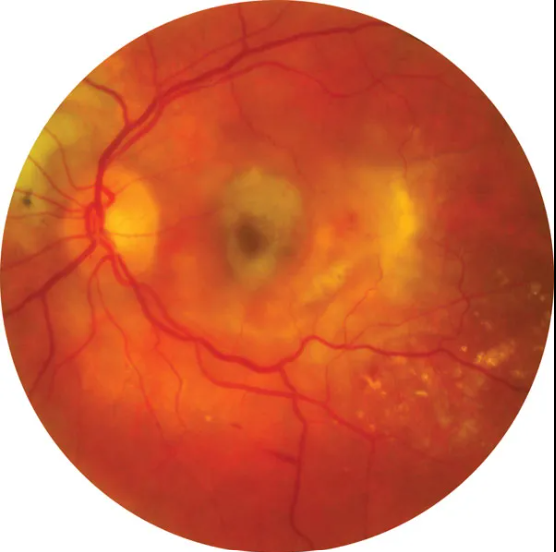
Sometimes called ARMD or AMD (they are the same thing), it is age-related and occurs when the macula doesn’t work like it should. Although it typically doesn’t hurt, it can affect your ability to see well.
Age-related macular degeneration can lead to a loss of the central part of vision needed for important daily tasks or for seeing things like faces clearly, says Dr. Rahul Khurana, an American Academy of Ophthalmology spokesperson who practices at Northern California Retina Vitreous Associates in Daly City, California. Your peripheral vision remains.
Types
According to the American IT Foundation, “There are two basic types of it: dry and wet. Approximately 85% to 90% of the cases” are dry.
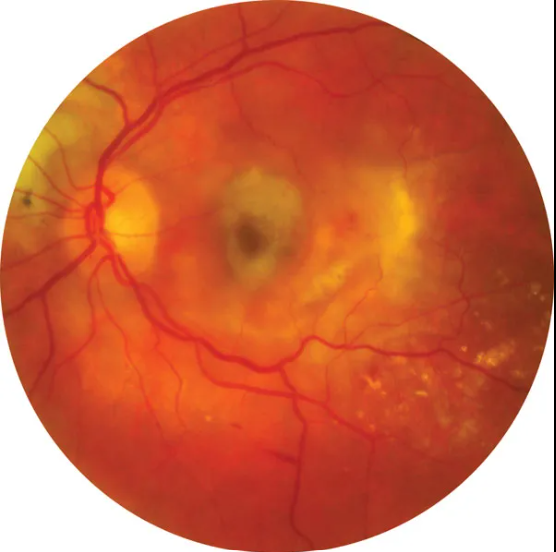
In addition, there are four stages of it, ranging in severity from mild to severe. People in the advanced stages of the disease are considered legally blind.
- Dry or early age-related. Dry age-related, it is the most common form of the disease, with nearly 90% of cases falling into this category. Most early cases of macular degeneration remain mild and don’t affect vision, says Dr. Carl Regillo, chief of retina service at Wills Eye Hospital, Thomas Jefferson University, in Philadelphia. However, it still requires regular monitoring, as there’s a small chance that it will progress into another form of age-related macular degeneration.
- Intermediate-age-related macular degeneration is also a dry form of the disease. It is usually associated with some vision loss. Before the wet stage occurs, there is always some form of dry age-related macular degeneration.
- Geographic atrophy. Although geographic atrophy is still a dry form of age-related atrophy, it is associated with more vision loss than the early or intermediate stages. For this reason, it’s considered an advanced form of the disease. Geographic atrophy can turn into wet age-related atrophy.
- Wet age-related macular degeneration. Wet age-related macular degeneration is also called advanced disease or neovascular age-related macular degeneration. It’s associated with the growth of abnormal blood vessels beneath the retina. These vessels may leak blood. Vision loss tends to be faster with wet age-related macular degeneration and is responsible for 90% of the vision loss from AMD, Khurana says. You can have both geographic atrophy and wet age-related macular degeneration in the same eye.
If wet age-related it is caught early enough, you can usually preserve most of your vision.
Causes
The exact causes of age-related it are not always clear, although it’s associated with aging, starting at age 50 and onward. Genetics, smoking, and being white all have a role as well. Here’s more information on the causes of it.
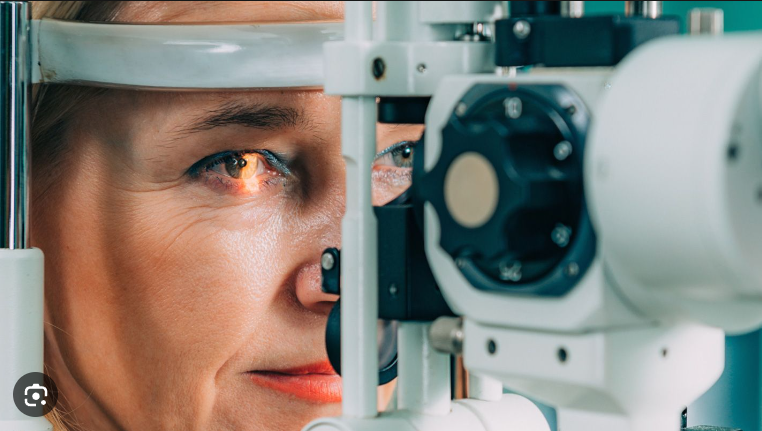
- Aging – specifically, being age 50 or older. “Age is part of the name and diagnosis,” says Dr. Charles Wykoff of Retina Consultants Houston in Houston. The risk for age-related macular degeneration significantly grows with each passing decade starting in the 50s, Wykoff says.
- Genetics, including a family history of age-related it. There are dozens of genes associated with the disease, but genetic testing is not recommended by the AAO for the detection of age-related macular degeneration at this point because there is no perceived treatment benefit from the results, Khurana says.
- Being white. In 2010, 89% of those who had age-related macular degeneration were white, according to the National Eye Institute.
- Smoking. “Smoking doubles your risk, giving you another reason to quit,” Khurana says.
Symptoms
Initially, you may not notice any symptoms if you have an age-related condition. Some people who live a long time with a mild form may never notice a change in vision.
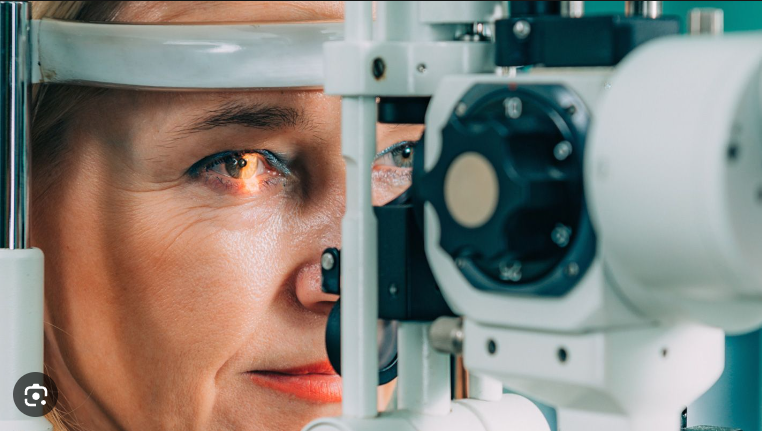
Symptoms of age-related dementia include:
- Blurry vision.
- Seeing black or dark areas in your central vision.
- Vision that appears darker than before.
- Trouble reading.
- Difficulty seeing details in both close and far vision.
“Imagine you are looking at a clock with hands. With age-related macular degeneration, you might see the clock’s numbers but not the hands,” according to the AAO.
The symptoms of age-related macular degeneration may appear in one or both eyes. Sometimes, you could have age-related macular degeneration in one eye but not notice the symptoms because your other eye still sees well. It’s possible to have different stages of disease in each eye, or to have disease in one eye but not in the other.
If you have these symptoms, you should see an eye doctor for a dilated eye exam. Although these are the typical symptoms associated with age-related macular degeneration, the disease may go undetected, especially if you have dry age-related macular degeneration, Khurana says.
It’s important to get diagnosed early because you have a better chance of preserving vision.
Diagnosis
Macular degeneration is most frequently diagnosed through a dilated eye exam performed in a physician’s office. One of the most effective ways that eye doctors can identify conditions like glaucoma and macular degeneration is through a dilated eye exam.
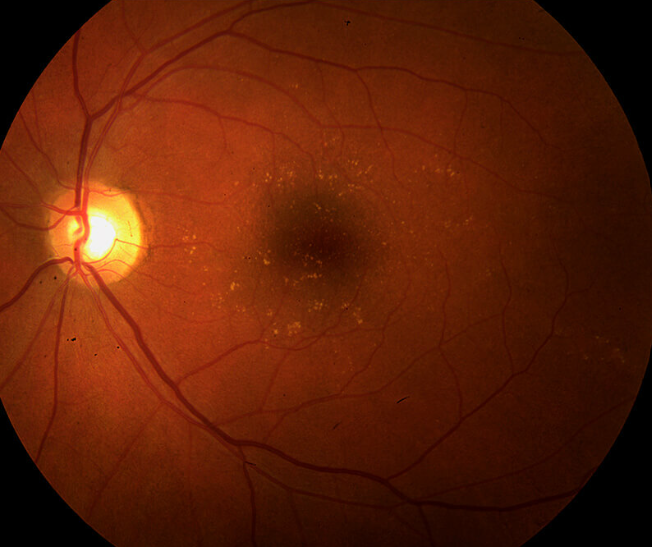
During a dilated eye exam, you’ll receive special drops that allow the doctor to see the back of the eye, including the retina, macula and optic nerve. These drops make your eyes appear wider. Your eye doctor also may use something called an Amsler grid that can help measure changes or loss of your central vision.
When checking for age-related macular degeneration, your doctor will look for signs of disease that are not visible to you, such as:
- Yellow-colored deposits called drusen.
- Blood vessel growth that is abnormal.
- Blood vessels that leak fluid.
- Deposits of pigment underneath the retina.
Treatment
The treatment for age-related macular degeneration depends on the type that you have. However, early detection is always helpful in preserving your vision.
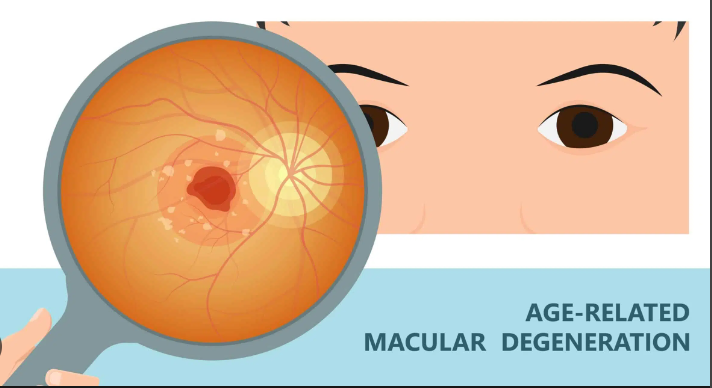
Also read-Bulimia Nervosa : A Patient’s Guide To Bulimia Nervosa And Its Symptoms
images source: Google
Disclaimer: The opinions and suggestions expressed in this article are solely those of the individual analysts. These are not the opinions of HNN. For more, please consult with your doctor.







